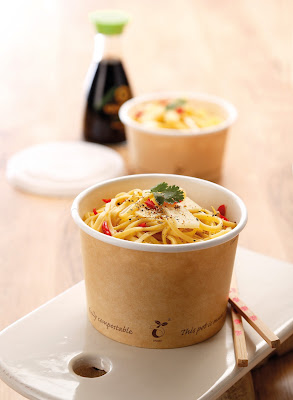The United States of Snackers Part 2: Get Your Street On
In our last post we discussed some of the reasons why such growing numbers of American’s are now eating out of home. In the second part of our dining habits special, we delve into the menu: from raw materials and how they are cooked, to FOMO and the Mexican Wave.

Meat, Let Us Count the Ways We Love You
Barbecued, broiled, baked, braised, fried, poached, roasted, seared, stewed… it’s fair to say that America’s appetite for meat is a bit of an animal. By 2018 our average meat consumption is estimated to reach 200 pounds per person (Marketwatch), that’s the same weight as 36 chickens - or one and a third Tom Cruises, in case you were wondering. Around half of all meat eaten in the US is chicken (Marketwatch) which, rather fittingly, puts it top of the bill (see what we did there). This works out at around 89 pounds of chicken per person (just under two thirds of a Tom Cruise) while the average annual consumption of beef and pork comes in at markedly less: around 54 and 50 pounds (Marketwatch) respectively (or a third of Tom Cruise each). And while beef could be thought of as the lesser option, America still consumes a whole lot of cow. More than 33 million cattle per annum (NBC) and a whopping 71% percent of this is enjoyed as a burger: ground and grilled (Burgerweb). It’s worth noting, as meat consumption has risen, Americans are increasingly demanding a bright and breezier breed of beast. Since 2006, the demand for grass fed cattle has risen 25-30% year on year (Forbes) and a growing number of consumers are now calling for a reduction - if not total ban - of antibiotics and hormone from wider farming practises too. So if meat is a big part of you menu, and you are not doing so already, your business may benefit from organic produce.
Warning: May Contain More Vegetables
Don’t get us wrong, we love meat (see above) but vegetarian options - as well as vegetables in general - are very much a ‘growth’ market. Yup it’s time to get your flexitarian groove on which essentially means upping your intake of non-animal based foods items and saving beast for ‘best’ (do weekends, Wednesdays and evenings count?). An estimated 22.8 million American’s now consider themselves flexitarian (Washington Post) – that’s the population of Minnesota, Michigan and Washington combined. Nevertheless, it’s not just about animal welfare or reducing the environmental impact of livestock. No, going veggie - even part time - is a fairly conducive path to healthier diet, as long as you’re not supplementing fried chicken with cheesecake (believe us, we’ve tried). What’s more, if you’re catering for low-carb customers, vegetables really are your friend and options such as cauliflower rice, zucchini noodles and sweet potato pizza bases can offer some tasty low GI alternatives: comfort foods with a lot less carbs. Don’t get us wrong, there’s a time and place for a light and zingy salad - in fact cleaner, lighter menu choices are another growing trend. For many consumers however, comfort is the key. Last year, for example, Google searches for vegan mac and cheese were up 69%, vegan cheese was up 80% and vegan ice cream 101% (Google). Meanwhile, for the non-meat meat lovers ‘Plant Butchery’ is providing some increasingly clever alternatives. Utilizing high quality vegetable proteins (as well as eggplant, nuts and ‘shrooms), plant butchery creates great ‘steaks’, ‘bacon’ (liquid smoke at the ready)’ and other beefy treats sans actual bona fide meat.
Taking the World by Storm
America is getting its Street On. Big time. Yes it is fair to say that the street food movement has taken the world by storm and, in many senses, we are leading the way. Just look at our food trucks. The US is estimated to have around 4,130 food trucks in operation today generating a combined revenue of $1.2b per annum – an increase of 12.4% over the past five years (StatisticBrain). So where did it all begin? Well historically speaking of course, street food vendors typically served up super-local fare that was honed - invented even - in their neighborhood or region. Then, as we all began moving around, ‘local’ dishes travelled further and further afield, blending with a million and one new flavours and influences along the way to create a rich myriad of delights from poke to shawarma.
Food Safari
Today more and more US consumers are now seeking to explore the world through their senses, to experience something new without necessarily having to leave their zip code. In fact, in a recent poll, 38% of American’s stated they wanted to see more authentic international restaurant choices in 2017 (Mintel). One of their main drivers: fear of missing out! Yes, FOMO has been rife among millennials for some time already and has now spread to older generations too. This is excellent news for food providers as it can help to boost sales and pop-ups especially can really tap in to that FOMO feeling by offering a more unique experience. And where there’s unique there’s profit, as research has demonstrated, with three quarters of diners asked stating they believe it’s worth paying more for a unique pop-up experience, no wonder US pop-ups have seen 82% growth(Eventbite).
Mexican Wave
While the world may be your oyster, if you’re American, it’s more than likely to be a taco shaped one because the nation currently holding the strongest sway over our taste buds are our neighbors just south of the border. In fact, Mintel recently reported that 18% of American’s had visited a Mexican chain five times or more in the previous 90 days (Mintel). What’s more, in 2016, the States collective taco order reached 4.5 billion, that’s just shy of 14 tacos each (Nationaltacoday). There is of course ‘mucho mas’ to Mexican cuisine than our Americanized taco and now more than ever subtler influences - more of a Mexican nod than a Mexican wave - are on the rise. What’s more, simply adding a street twist to any classic will most likely serve you well as 35% of US consumers recently stated that a unique flavor or ingredients within a familiar dish would entice them to try new menu items (Mintel).
Smokin’ Hot
If you’re looking for further inspiration, chipotle and other smoky flavors are a good place to start. From the piquancy of pimento-smoked jerk and other Caribbean classics, to zingy ‘gogi gui’ (Korean table top grills) - not to mention the rich hickory twang of our own Southern barbecues. And where there’s smoke there’s fire - and not just the flaming kind – yes, we’re talking spice. While evident in many of the cuisines mentioned above, some of the fiercest (yet aromatic) on-trend flavors currently come from South East Asia and America is hooked. Not convinced? Well, over the past 16 years, America’s hot sauce market has risen a whopping 165% (Business Insider) – with current hipster favorite Thai-made Sriracha now more popular than ketchup. How do you like them peppers?
Nonetheless South East Asia is serving up so much more than just spice because those folk can really use their noodle too! Vietnamese pho has been steadily growing in popularity for years, since 2013 Google reports an 11% rise in searches year on year (Google). Korean rice bowl bibimbap is another one to watch and bowled concepts in general (from curry to pasta, noodles to salad and everything in between) are so very 2017 and provide plenty of opportunities for customization too which is a continuing trend from last year.
Take Away's
Animal Magnetism - American’s love meat. When it comes to sandwiches, steak, chicken and salt beef are the nation's favorites, see our post HERE for more info
Dangle the Carrot - Flexitarianism and low carb diets are on the rise, so beef up your meat-free offering with plenty of comfort veg. Check out OhMyVeggies for some snack-spiration
Get Your street On - use your noodle, serve up smoking hot deliciousness by the bowlful and, if ever in doubt, give your customers a little Mexican Wave
…And Finally: Keep It Real - As growing numbers of food service operators add global flavors to their menus, the authenticity of the food on offer - as well as the diners experience in general - becomes all the more essential. With this in mind, the food you offer should tell a story, say something about you and your brand. You don’t have to be Thai to serve Pad Thai noodles, but your customers should know where your passion for the dish comes from. This could be as simple as you love the blend of flavors, or a little taste of your favorite place in the whole world, but be true to yourself because your authenticity will shine through.
References:
